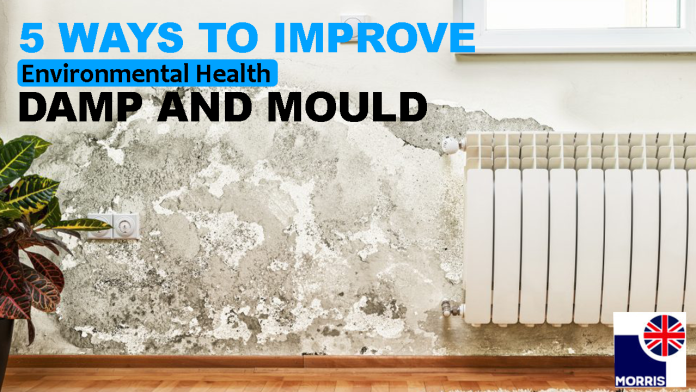When we speak about environmental health, damp and mould are two elements that can cause significant issues. People who live in houses with the two toxigenic aspects and causes remain susceptible to numerous health problems and complications. For instance, they can suffer from respiratory infections, asthma, and allergic rhinitis.
On top of that, some people are exceedingly sensitive and vulnerable to dampness and mould and the toxins, especially mycotoxins, released by them. Additionally, extra effort must get made to protect children, the elderly, and those with a compromised immune system from these two elements.
Mould-affected and damp areas occur primarily due to excess moisture. The presence of nutrients and suitable growth conditions helps with the former. Thus, the best approach to prevent or rectify the two is to address their causes and eliminate them at their source.
In this article, let us deliberate on five ways to improve environmental health, damp, and mould.
- Cleaning Products
Cleaning products such as disinfectants can help promote the spread and growth of mould. It is especially so for those having overwhelming odours like pine or lemon smell. Applying these products with volatile organic compounds in the affected areas can aid the contamination, enabling excessive growth.
Thus, the best way to improve existing mould or prevent its growth is by using water-based cleaners. They should be non-aerosol and non-toxic to ensure no issues occur.
- Ventilation
Damp and mould can attack places and rooms that do not have appropriate ventilation. The restricted flow and circulation of air can promote the two adverse elements, enabling the spread and growth, respectively. Thus, opening the windows and allowing fresh air to circulate inside a room helps considerably.
Fresh air can aid in reducing the mustiness, dampness, and stuffiness of a closed space. Additionally, it can eliminate undesired odours.
- Moisture Reduction
The UK best dehumidifier can help if the moisture content in a room is a severe issue. The device can lower the humidity levels in the closed space, keeping it at a minimum. It, in turn, can reduce dampness and thwart mould growth conditions.
Generally, a 12l dehumidifier can help address severe damp conditions in a 300 square feet room. It can do so efficiently, effortlessly, and cost-effectively.
- Ultraviolet Light
When dealing with mould, it is essential to consider- “how bad is mould for your health?” and “how does mould affect your health?” Conventionally, the responses to both queries are not desirable outcomes for anyone. Thus, it is crucial to address the issue as soon as possible.
Ultraviolet light can help reduce mould growth and spread and deal with exceptionally-poor conditions. Exposing it to the affected areas works effectively. Besides that, placing the UV lights in the HVAC system is also a suitable method or approach.
- Heating
Low temperatures can help with mould growth. Thus, increasing the heating temperature and using an energy-efficient system helps substantially. On top of that, the high temperature of the air can work on cold and damp surfaces, aiding in reducing the moisture content.



 Bitcoin
Bitcoin  Ethereum
Ethereum  Tether
Tether  XRP
XRP  Solana
Solana  USDC
USDC  TRON
TRON  Cardano
Cardano  Lido Staked Ether
Lido Staked Ether  Avalanche
Avalanche  Toncoin
Toncoin